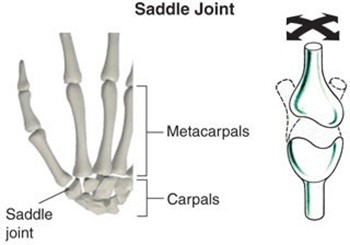Parathyroid hormone leads to an increase in blood calcium levels through increased activity in what cells?
Osteoblasts.
Canaliculi.
Osteoclasts.
Osteocytes.
The Correct Answer is C
Osteoclasts are the type of cells that increase their activity in response to parathyroid hormone (PTH) and break down bone tissue to release calcium into the blood.
PTH helps maintain the right balance of calcium in the body by stimulating osteoclasts.
Choice A is incorrect because osteoblasts are the type of cells that form new bone tissue by depositing calcium into the bone matrix.
PTH inhibits osteoblasts and reduces bone formation.
Choice B is incorrect because canaliculi are not cells, but small channels within the bone matrix that allow osteocytes to communicate with each other and exchange nutrients and waste.
PTH does not affect canaliculi directly.
Choice D is incorrect because osteocytes are the type of cells that are mature bone cells trapped within the bone matrix.
PTH can stimulate osteocytes to release calcium from the bone, but not as much as osteoclasts.
Nursing Test Bank
Naxlex Comprehensive Predictor Exams
Related Questions
Correct Answer is C
Explanation
The thumb has three joints: the carpometacarpal (CMC) joint, the metacarpophalangeal (MP) joint, and the interphalangeal (IP) joint.
The CMC joint is a saddle type of joint that allows the thumb to move in multiple directions. A saddle joint has two concave surfaces that fit together like a rider on a horse.

Choice A is incorrect because hinge joints allow only flexion and extension movements, such as the IP joints of the thumb.
Choice B is incorrect because condylar joints have an oval-shaped surface that articulates with a shallow cavity, such as the MP joint of the thumb.
Choice D is incorrect because ball and socket joints have a spherical head that fits into a cup-like socket, such as the shoulder or hip joints.
Correct Answer is ["obturator foramen"]
Explanation

The obturator foramen is a large opening in the pelvis that is formed by the ischium and pubis bones.
It is located in the lower part of the pelvis, below the acetabulum (the socket of the hip joint).
The obturator foramen is covered by the obturator membrane, which separates the pelvic cavity from the thigh.
Several important structures pass through or around the obturator foramen, including the obturator nerve, artery, and vein.
Injuries to the obturator nerve can result in weakness or paralysis of the muscles of the inner thigh, while injuries to the obturator artery and vein can result in severe bleeding and require immediate medical attention.
Whether you are a student looking to ace your exams or a practicing nurse seeking to enhance your expertise , our nursing education contents will empower you with the confidence and competence to make a difference in the lives of patients and become a respected leader in the healthcare field.
Visit Naxlex, invest in your future and unlock endless possibilities with our unparalleled nursing education contents today
Report Wrong Answer on the Current Question
Do you disagree with the answer? If yes, what is your expected answer? Explain.
Kindly be descriptive with the issue you are facing.
